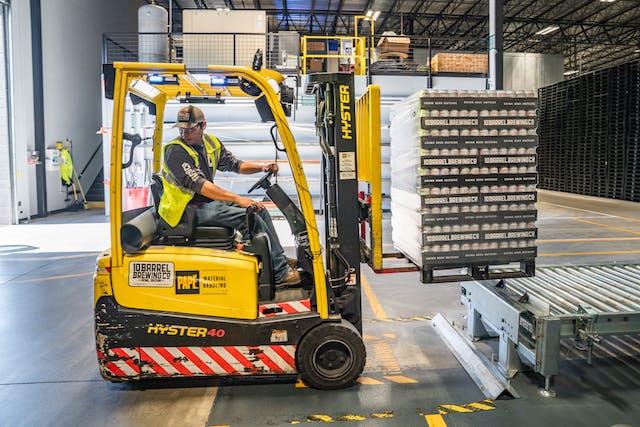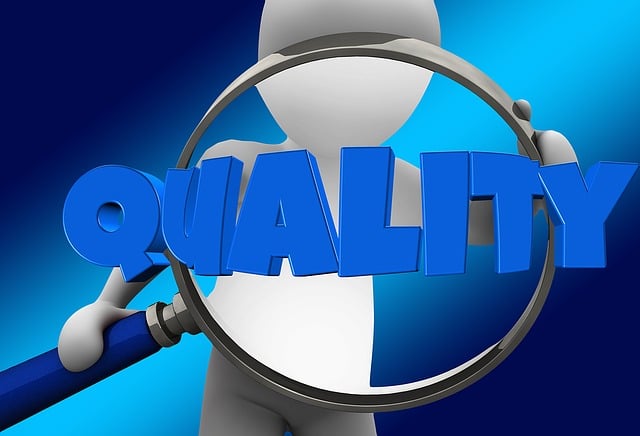The food industry is enormous – it touches many different industries and employs millions of people. Food manufacturers, distributors, and restaurants rely on technology to operate their businesses efficiently.
SaaS solutions can help you manage your food-related business more effectively by streamlining processes like purchasing inventory and accounting for expenses. You’ll also have access to software tools that optimize your workflow and increase productivity among employees.
We’ll explain how SaaS works in the food industry and share some valuable examples of cloud applications used by major players across various aspects of the industry, from production through sales channels.
Benefits of Using SaaS in the Food Industry
-
More Control over Productivity
In addition to increasing productivity, SaaS solutions can help you manage your business from anywhere. The ability to work from a mobile device is one of the most significant benefits of SaaS in the restaurant industry. Using a cloud-based system like ERP, you can manage your business on the go and access information wherever you are—at home or on the road.
-
Simplified Accounting and Financials
SaaS-based accounting and financial management software is often used to manage the accounting and financials of companies in the food industry. The software lets you track cash flow, manage receivables, payables, and payroll, all from your computer or mobile device. It also provides you with powerful tools for forecasting and budgeting as well as automated reporting functions.
-
Streamlined Purchasing and Inventory Management
Inventory costs can be reduced as SaaS solutions allow you to purchase only the products you need and then distribute them through a cloud-based system. Plus, it is much easier to track your supply chain in real-time when using this type of software.
You will also reduce the risk of overstocking or understocking with SaaS because of its ability to track inventory more accurately than traditional methods like spreadsheets.
This type of solution reduces spoilage due to accurate forecasting and forecasting tools that are built into the software solution itself.
Following are some ways how SaaS is used in the food industry:
1. Visitor Management Software
Visitor management software is an important aspect of any food business. It helps to manage and track visitors, identify their needs, and provide the right information to them in order to increase your sales.
Hotels, restaurants, and other hospitality businesses typically use visitor management software. This solution allows you to capture the information of visitors in real-time. You can also use it as visitor check-in and reservation system.
The main purpose of this software is to provide detailed reports on your guests so that you can understand their purchasing patterns, which area they prefer, and, more importantly, what they like about your establishment.
2. Integrated Customer Relationship Management (CRM)
CRM solutions are a vital part of any business, and the food industry is no exception. CRM software enables companies to better understand and serve their customers, which ultimately leads to increased sales.
Integrated CRM tools allow small businesses to store customer data in one place, so it’s easier for sales teams to identify customers who could benefit from targeted marketing campaigns or products. This also allows them to avoid wasting time on people who’ve already declined offers or aren’t interested in what you have available.
More importantly, integrated CRM solutions can help improve customer service by providing ways to track complaints through every step of the resolution process. This reduces errors and helps prevent similar issues from happening again with other customers who encounter similar problems while trying to contact your company for assistance with their own concerns.
3. Quality Assurance and Safety Testing Software
In the food industry, there are a lot of processes that need to be in place for quality assurance and safety testing. This includes how products are made, where they’re made, how long they’re kept, and where they end up. The food industry is very complex and can be quite difficult to keep track of.
SaaS helps manage the complex processes involved in ensuring that food products meet the required standards. It can help with tracking products throughout the supply chain, providing an accurate record of where items are located at any time. This makes it easy to know when a product has gone bad or if there have been recalls on certain items because they have gone out of date or have been recalled due to contamination issues.
The software also helps with compliance checks and audits that are required by law within the food industry. It can help ensure that all required documentation has been completed correctly so that you don’t run into any problems with government agencies or other organizations that may want to inspect your facilities or audit your records for compliance purposes.
4. Inventory Management
The food industry is highly dependent on SaaS to manage its inventory. The software tracks all incoming materials, including ingredients, packaging, and other items entering the facility. It also tracks outgoing products to ensure that everything gets shipped out on time and in proper condition. This helps companies manage their business’s financial and customer service aspects more efficiently.
Following are some benefits of using inventory management software in the food industry:
- Inventory management ensures that products are available when needed. This increases the productivity and efficiency of the entire supply chain, which reduces waste and loss.
- If a company runs out of inventory, it can lead to lost sales and revenue, which could have been earned if the product was available for purchase.
- Inventory also helps in controlling costs by allowing companies to buy only what they need and when they need it without having to worry about having too much or too little inventory on hand at any given time.
- Helps manage raw material stocks, ensuring that raw materials are available when needed by production facilities or other departments within the organization.
5. Enterprise Resource Planning Software (ERP)
ERP software is a key component of any business. It can help you manage your inventory, orders, sales, employees, finances, and more. ERP software is designed to be used in a variety of industries, including manufacturing, food service, retail, and healthcare.
The goal of ERP systems is to connect all parts of an organization together so that everyone has access to the information they need at every stage of their workflow process – whether it’s salespeople who need real-time access so that they know how many items are in stock before making recommendations; buyers who need accurate numbers when negotiating prices with suppliers; managers who want accurate reports detailing pipeline performance; or customer service staff needing up-to-date information on order status.
6. Dynamic Pricing Software
Dynamic pricing software can help you maximize the value of your products and adjust your prices to meet demand. It’s important to keep in mind that dynamic pricing software doesn’t allow you to set prices arbitrarily; rather, it helps businesses optimize their sales based on market trends.
For example, if there is a sudden shift in demand for one of your items (such as if there is a virus outbreak making people more susceptible), dynamic pricing software can help increase the price of that item so that you don’t lose out on sales due to limited availability. Dynamic pricing also allows companies who offer subscriptions or memberships at different tiers (e.g., platinum vs. standard) an easy way to automatically adjust those tiers based on customer behavior instead of manually changing them every month.
7. Food Traceability Software
Food traceability software is used by food companies to track the movement of their products through the supply chain. This enables them to monitor where the food comes from, how it was made, and who handled it along the way.
In addition, this SaaS solution allows companies to better understand their supply chain and reduce the risk associated with contaminated food. It also helps them comply with regulations regarding food safety, such as HACCP (Hazard Analysis Critical Control Point) or GFSI (Global Food Safety Initiative), which are industry-wide standards for food safety.
Companies that use this software include:
-
Food Processors
Companies that process raw materials into finished products may want to use this type of software to track ingredients from farm to table. This will help them identify potential contamination sources during production and make improvements accordingly.
-
Food Distributors
Distributors are often responsible for transporting goods from one location to another throughout their distribution network. This software can help them implement best practices for transportation such as temperature control and refrigeration maintenance so that they deliver quality products at all times.
8. Warehouse Management Systems (WMS)
Warehouse management systems are a key component of the supply chain. They can be used to reduce costs, increase efficiency and improve visibility into warehouse operations. These systems allow companies to monitor how much inventory is available, where it is located and how quickly it can be shipped out.
SaaS providers offer warehouse management solutions that allow companies to track merchandise as it moves through their supply chains. The software can help businesses improve their inventory management practices, reduce costs and improve customer service by reducing stock-outs.
9. Order Management Systems (OMS)
Order management systems enable restaurants to accept orders from customers via phone or online ordering system. These systems keep track of all orders received by the restaurant and can automatically send notifications to the chef when a customer places an order. The chef can then prepare food according to the order details such as size and quantity.
SaaS-based order management systems can also be integrated with other restaurant operations, including inventory management, customer relationship management (CRM), and accounting and payroll services.
Conclusion
The food industry is a tough one to navigate, especially if you’re a small business owner with limited resources. In this case, SaaS solutions can be an invaluable tool for streamlining operations and keeping track of the data that matters most to your food company or restaurant’s success.


